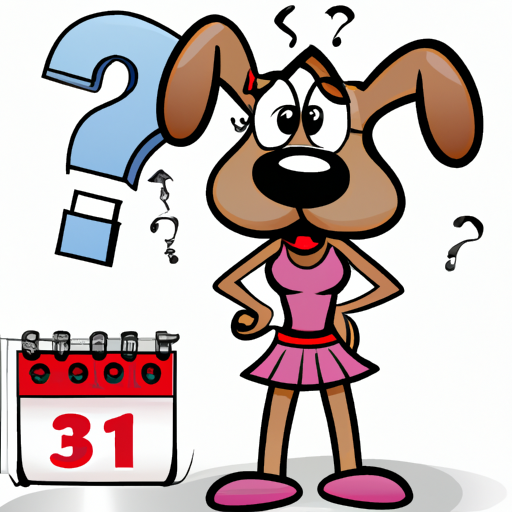Understanding Your Dog’s Reproductive Cycle
Understanding your dog’s reproductive cycle is crucial as a caregiver. A dog’s reproductive cycle, also known as the ‘heat’ cycle, is far different than that of a human. Unlike in humans, a female dog’s cycle doesn’t happen monthly. Instead, most dogs come into heat only twice a year.
The Onset of the Reproductive Cycle in Dogs
Typically, your dog will start her first reproductive cycle somewhere between six months to one year old. However, this age can vary based on the breed and size of the dog. Larger breeds tend to start later than smaller breeds.
- Small Breeds: Could start as early as five months old
- Medium Breeds: Usually start around six months old
- Large Breeds: May not start until they are one year old or older
Recognizing Signs of Your Dog’s Reproductive Cycle
Recognizing the signs of your dog’s reproductive cycle is pivotal for both your dog’s health and your peace of mind. Here are some signs you may notice:
- Swelling of the vulva
- Spotting or bleeding
- Frequent urination
- Behavioral changes such as increased restlessness or aggression
The Phases of the Reproductive Cycle
The reproductive cycle of a dog has four phases: Proestrus, Estrus, Diestrus, and Anestrus.
| Phases | Duration | Description |
|---|---|---|
| Proestrus | 7-10 days | The dog attracts males but is not ready to mate |
| Estrus | 5-9 days | The dog is ready to mate |
| Diestrus | 60-90 days | The dog is either pregnant or in a resting phase |
| Anestrus | 4-5 months | The dog is in a resting phase |
The Importance of Spaying Your Dog
As a caregiver, it’s important to consider spaying your dog. Spaying your dog before she reaches her first heat can help prevent serious health issues such as mammary cancer and uterine infections. Plus, it helps control the pet population.
Frequently Asked Questions
1. How long does a dog’s reproductive cycle last?
A dog’s reproductive cycle typically lasts between 2-4 weeks.
2. How often do dogs get their reproductive cycle?
Most dogs go through their reproductive cycle twice a year, but this can vary based on breed and individual health.
3. Can I prevent my dog from having a reproductive cycle?
Yes, you can prevent your dog from having a reproductive cycle by getting her spayed.
4. Are there health risks associated with a dog’s reproductive cycle?
Yes, dogs who are not spayed are at risk for pyometra, a serious and potentially fatal uterine infection, as well as mammary cancer.
5. How can I tell if my dog is in her reproductive cycle?
Common signs include swelling of the vulva, spotting or bleeding, frequent urination, and behavioral changes.



